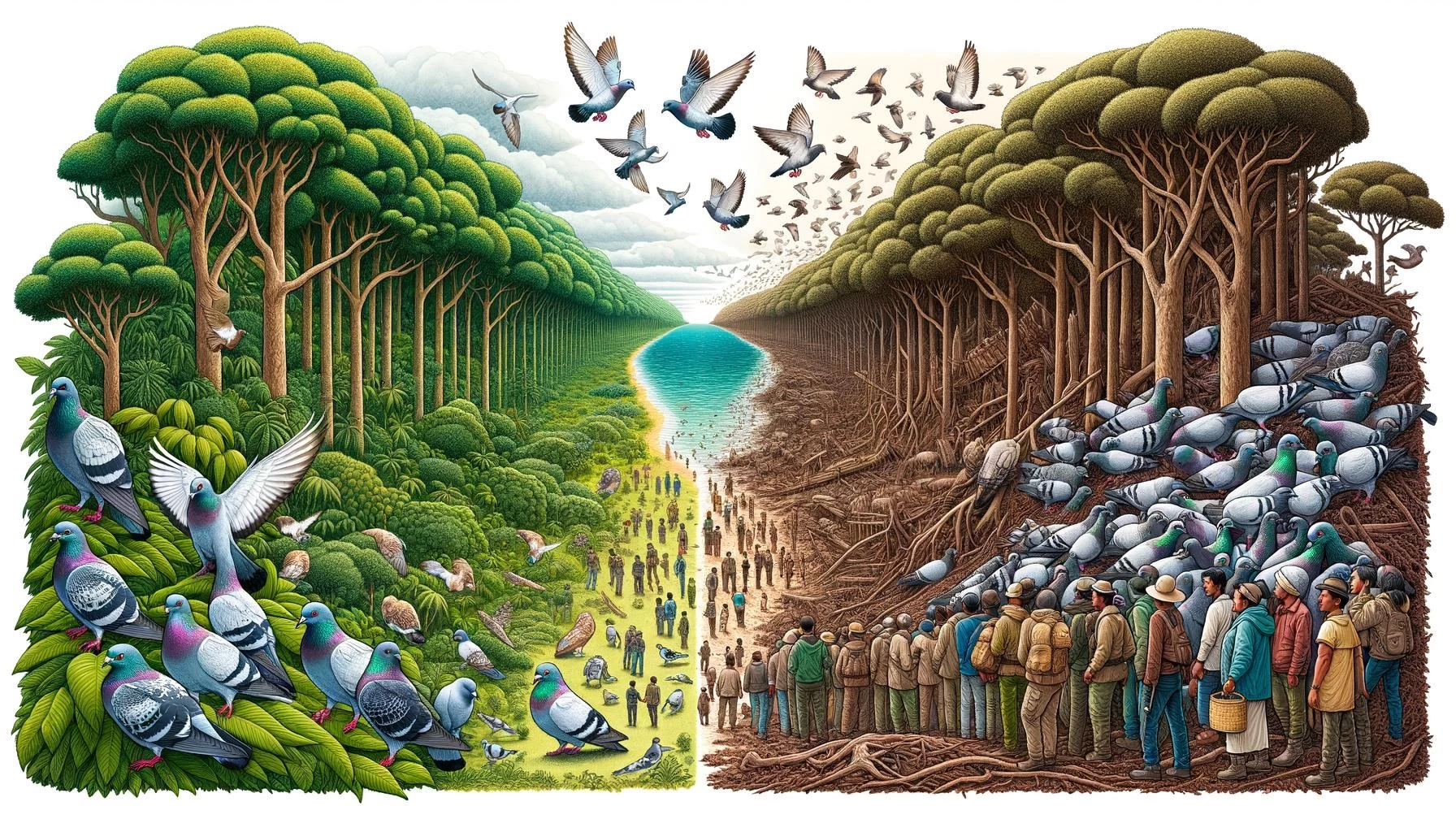Land use change is a major threat to biodiversity worldwide, impacting various species, including birds. Pigeons, a common and adaptable bird species, are not exempt from the consequences of land use change. This article will explore the relationship between pigeons and land use change, focusing on their response to habitat loss, habitat fragmentation, and shifts in resource availability.
Key Takeaways
- Land use change, such as habitat loss and fragmentation, poses significant threats to bird populations, including pigeons.
- Pigeons are adaptable and can often thrive in urban areas, but they still rely on natural habitats for breeding and foraging.
- Changes in resource availability, such as food and nesting sites, can impact pigeon populations and their behavior.
- Conservation efforts should consider the importance of preserving diverse habitats and promoting sustainable land use practices to protect pigeon populations.
Habitat Loss and Fragmentation
Pigeons are known for their ability to adapt to urban environments, often making cities their home. However, despite their adaptability, pigeons still rely on natural habitats for breeding and foraging. Land use change, especially habitat loss and fragmentation, can have negative impacts on pigeon populations.
When natural habitats are destroyed or converted for human activities, such as agriculture or urban development, pigeons lose essential nesting sites and food sources. This can lead to population decline and a decrease in genetic diversity. Fragmentation of habitats can further exacerbate these issues, as it restricts movement and reduces the availability of suitable habitats for pigeons.
Resource Availability
Pigeons have a varied diet and can find food in urban areas, often feeding on human-provided sources such as garbage or bird feeders. However, they still rely on natural resources, including seeds, berries, and insects, to meet their nutritional needs. Changes in land use can affect the availability of these resources, leading to potential impacts on pigeon populations.
For example, the conversion of natural habitats into agricultural land can result in the loss of native plants and the reduction of insect populations. This can limit the availability of food sources for pigeons and other bird species. Similarly, urbanization can lead to the removal of trees and other vegetation, reducing the availability of nesting sites and roosting areas for pigeons.
Conservation and Land Use Planning
Conservation efforts should consider the importance of preserving diverse habitats and promoting sustainable land use practices in order to protect pigeon populations. This can include measures such as creating and maintaining green spaces in urban areas, preserving natural habitats, and implementing wildlife-friendly land use policies.
Urban planning should incorporate the needs of pigeons and other bird species by providing suitable nesting and roosting sites, ensuring the availability of food resources, and minimizing disturbances to their habitats. Additionally, efforts should be made to restore and connect fragmented habitats, allowing for the movement and gene flow of pigeon populations.
Education and awareness campaigns can also play a vital role in promoting the coexistence of pigeons and humans in urban environments. By highlighting the ecological importance of pigeons and the benefits they bring, such as seed dispersal and pest control, these campaigns can help foster a positive attitude towards these birds and their conservation.
In conclusion, pigeons are not immune to the impacts of land use change. Habitat loss, habitat fragmentation, and shifts in resource availability can have significant consequences for pigeon populations. Promoting sustainable land use practices, preserving diverse habitats, and raising awareness about the importance of pigeons can contribute to the conservation of these adaptable and valuable bird species.









